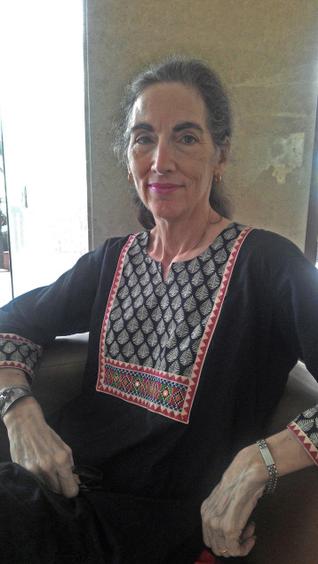Swami Vivekananda was probably one of the earliest and most notable influences on American artists, who garnered several admirers after his landmark address at the Parliament of the World’s Religions. Coincidentally, it is a globally renowned Indian artist, Jitish Kallat, who commemorated the 108th anniversary of the famous speech by lighting up the steps of the venue which is now the ‘Art Institute of Chicago’ with the text of the speech in his famous ‘Public Notice’.
That’s how Gail Levin, art historian and distinguished professor of 20th Century art and contemporary art at the City University of New York, began her lecture on “An overview of the Influence of Indian Art and Culture on American Artists from the World’s Colombian Exposition to Contemporary Art” at the National Gallery of Modern Art (NGMA).
The exposition she refers to is the same Parliament of the World’s Religions which was part of a world fair.
“One of them is Marson Hardley whose work I have studied extensively. He has emblems or symbols that refer to India in some of his paintings from 1913,” says Gail, who is in India as a Fulbright scholar.
Some of other influences on American art are Raja Ravi Varma, and Rabindranath Tagore who is linked to the Japanese curator Okakura Kakuzo and Isabella Stewart Gardner.
“My project was to study the mutual culture of Indian American artists, how they influence each other and how their culture influenced art,” she explains.
“For a long time I wanted to see Indian art so I can teach better. Every time I looked at a book on Asian American artists it was always about the Far East and there is little on South East Asia, especially because India is a such a huge country and there are so many Indians in America.”
After having written several books on artist Edward Hopper and studying feminist artists like Judy Chicago, Gail wants to devote the end of her career studying and writing about Asian art influences.
“My lecture outlines the book that I am planning to write on India. I never fully understood the symbolical references to Indian art. It is only when you get to know people that you learn about culture. I have been staying in Kerala the past few months and I learnt a lot, yet, feel I learnt so little compared to what there is to know.”
But then her trip took an unexpected turn when she met Kerela-based, Cholamandal-groomed artist Sajitha Shankar, whose work drew parallels with the work of Judy Chicago, notable for her ‘Dinner Table’ installation at the Feminist Art Centre in Brooklyn, New York. She has now completed the draft of a book on Sajitha and plans to organise an exhibition of her works.
“At first I thought she may be influenced by Judy because both their works feature the triangular ‘Kali Yantra’ symbol. But I know that she was not,” explains Gail.
What Gail also discovered was while American art was notably influenced by Indian culture, there wasn’t much American influence on Indian art. “American art wasn’t well known outside America until the second half of the 20th Century.” Gail talks about how artists like Maurice Stern, Theresa Bernstein, Roy Lichtenstein have been influenced by various aspects of Indian culture, often spiritual.
“The Sarabhai family of Gujarat invited several American artists to India including Charles and Ray Eames who helped found the National Institute of Design. Jackson Pollock and his contemporary Philip Guston were deeply influenced by the teachings of the Indian spiritual teacher J. Krishnamurti.”
source: http://www.thehindu.com / The Hindu / Home> Features> MetroPlus / by Harshini Vakkalanka / Bengaluru – January 22nd, 2016
